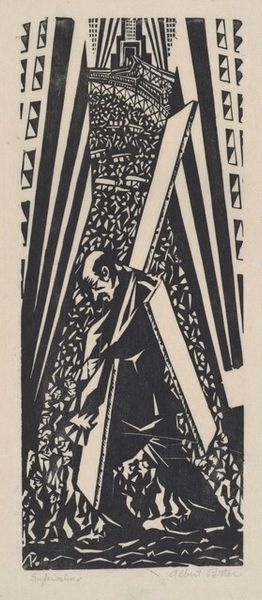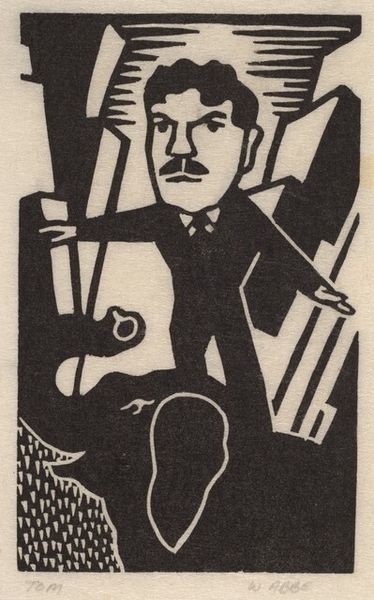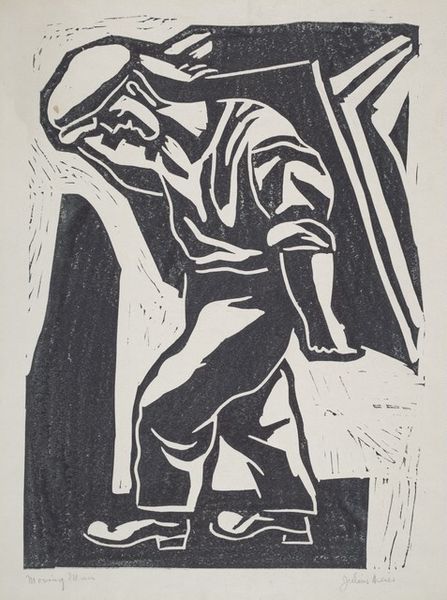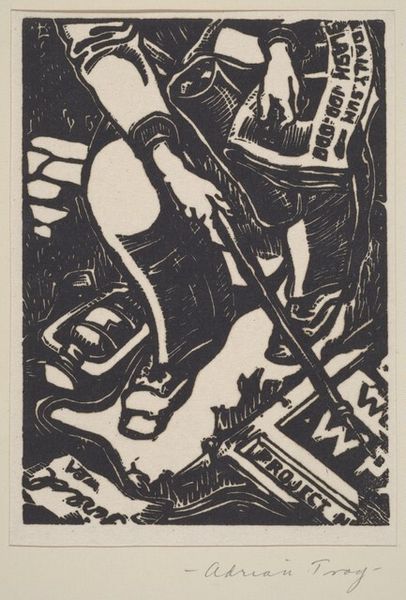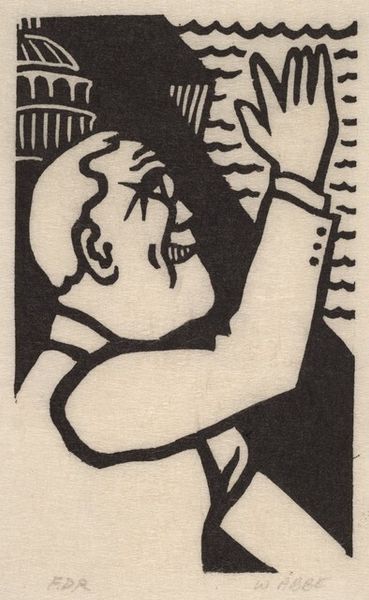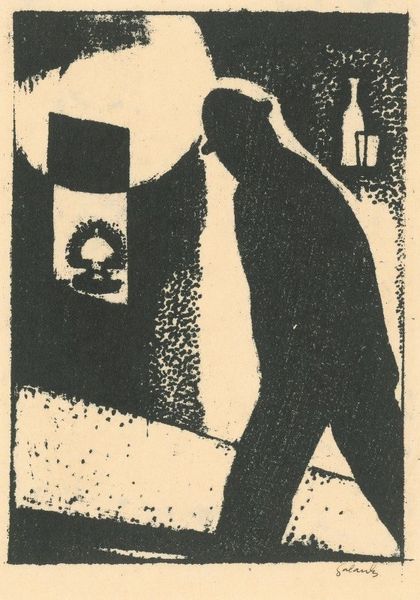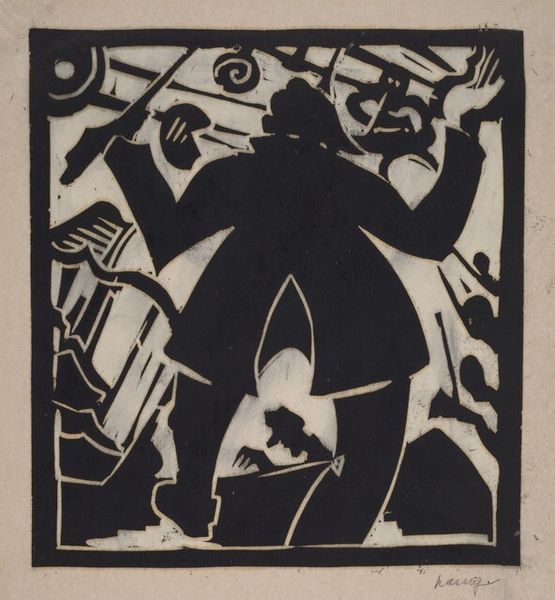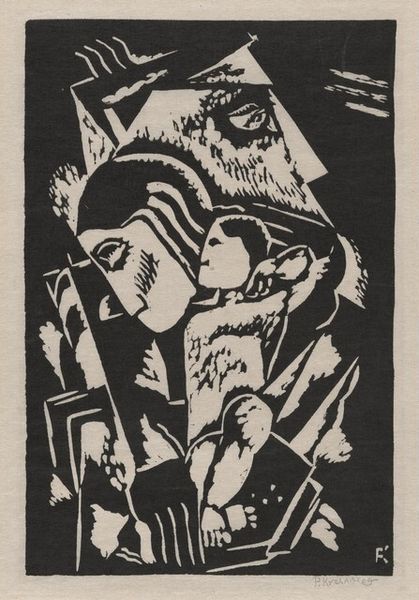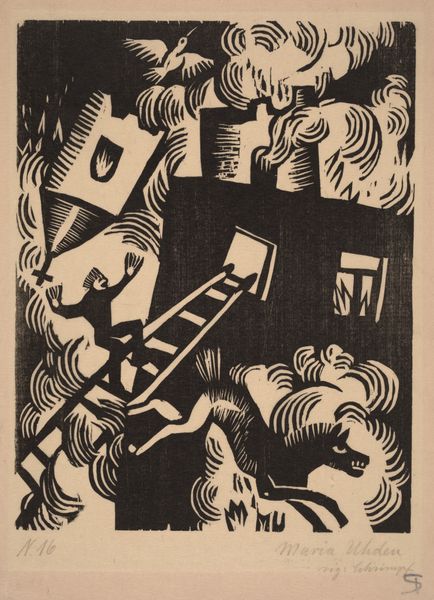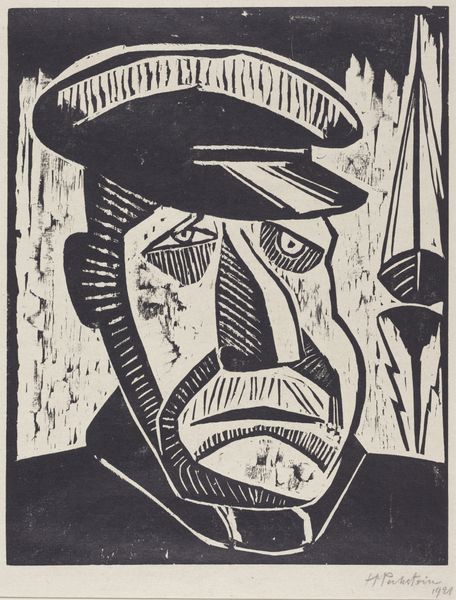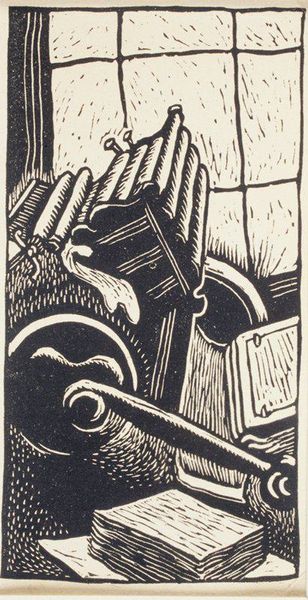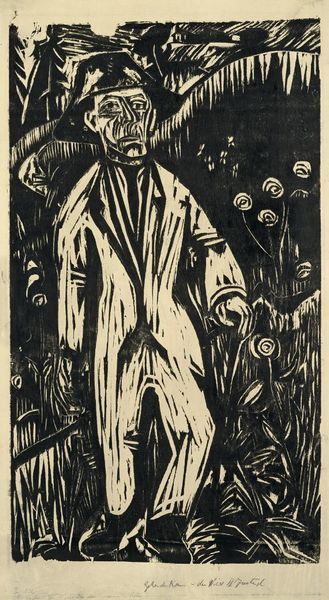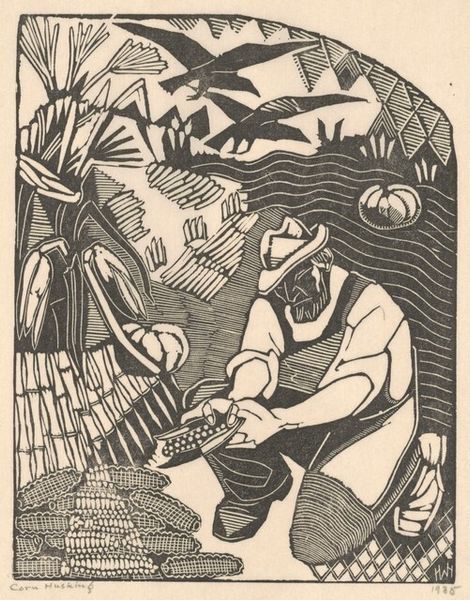
print, woodcut
#
portrait
# print
#
caricature
#
caricature
#
figuration
#
woodcut
Dimensions: Sheet:152 x 96mm Image:115 x 77mm
Copyright: National Gallery of Art: CC0 1.0
Curator: Here we have William Parker Abbe's "SIR NEVILLE," created around 1940. It's a woodcut print, showcasing a stylized portrait with caricaturistic elements. What strikes you about it? Editor: Immediately, the rigidness jumps out—stark blacks and whites carving out a sort of pre-war anxiety, maybe? He seems like he’s ready for trouble. Curator: Given that the work is a print, and therefore made through a relief process of carving away at a block of wood, this stark contrast is definitely amplified by that medium. Abbe likely labored meticulously to achieve the distinct shapes and patterns. Editor: The bowler hat, the mustache, the planes overhead – there’s a distinct visual language speaking to British identity in the face of looming conflict. Is this a commentary on the everyman stepping up or perhaps a jab at bourgeois complacency? Curator: That's an interesting angle. Consider that this wasn’t made for mass consumption but rather through craft labor in, possibly, a more personalized, direct engagement with materials as opposed to mechanized modes of print production and mass propaganda prevalent at the time. Editor: It does force you to focus on each cut, doesn't it? It emphasizes the construction itself rather than the illusion. Those slanting lines, which appear as waves in the backdrop, are menacing and ominous. They hint at upheaval despite his uptight formality. It's almost a double entendre – class satire and historical dread intermingling. Curator: Yes! And look at his grip on the umbrella, the tension is so well conveyed, almost as a physical extension of the prevailing sense of cultural unease during that period and even speaks to an expectation of class. The materiality conveys something beyond the purely representational. Editor: Exactly. The work's strength comes from its condensation of personal, political, and artistic elements. It's a testament to the power of caricature to hold complex truths about identity and society in such a compact format. Curator: This piece really opens up questions about labor in art making—it pushes us to reconsider those hierarchical divides between craft and the so called “high” art world. Editor: A striking intersectional portrait of a man and the anxieties of his moment in history. I love it.
Comments
No comments
Be the first to comment and join the conversation on the ultimate creative platform.
